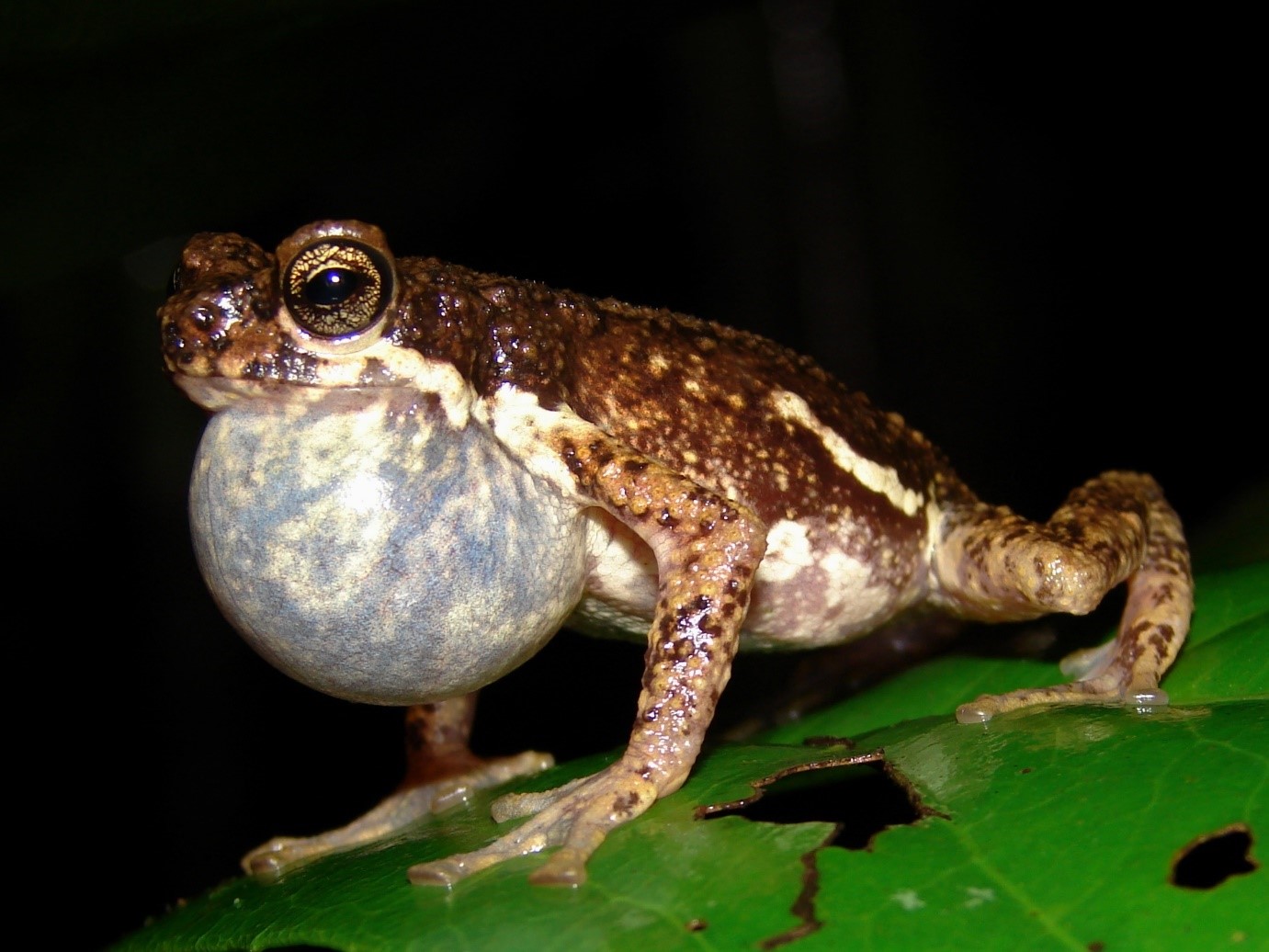Pedostibes tuberculosus, commonly known as Malabar Tree Toad is an endemic toad reported very sparsely across the Western Ghats. The discovery of this toad dates back to 1876 by Dr. Albert Gunther based on a collection of Lieutenant Colonel Beddome from Malabar. Pedotibes was a new genus and Pedostibes tuberculosus was a new species according to Dr. Gunther. Nearly 120 years after the discovery, in 1996 the species was first assessed according to IUCN Red list criteria and categorized it as vulnerable species. In 2004, it was reassessed as Endangered due to continued decline in population and known habitat less than 5000 sq.km. Pedostibes tuberculosus is a small sized toad (about 40mm). Malabar tree toads are unique with capabilities to climb trees unlike other toads that prefers to stay on ground.

Image from Dr. Gunther’s original paper in 1876.
Till recently, Malabar tree toads were known only from 8 localities across the Western Ghats (Gururaja, 2006 and Gururaja, 2012). Dr. Gurruaja's first encounter with Malabar Tree toad was in June 2004 from Jakkanagadde, Hosanagara Taluk, Shivamogga District, Karnataka. His subsequent visits to various parts of the Western Ghats provided enough evidence that Malabar Tree Toad is more wide spread than expected. He started finding them in early monsoon from Aghanashini, Bedti, Kali and Sharavathi river basis. But it was not sufficient to say about species distribution and habitat requirements. This has triggered an idea to Map distribution of Malabar Tree Toads across Western Ghats. But how?

Male individual of Malabar Tree Toad calling from a tree.
It was almost a year in June 2015 that he founded citizen scientist driven Frog Watch within India Biodiversity Portal and it had about 1000 observations posted on it from various parts of India. He has proposed Mapping of the Malabar Tree Toad on Frog Watch. After a few emails exchanges between Dr. Gururaja, Dr. Thomas Vattakavan and Dr. Prabhakar, they launched Mapping of the Malabar Tree Toad with Gubbi Labs, IBP and Earthwatch India as knowledge partners during end May 2015.
As a part of citizen science initiative, people who are interested in observing frogs will post their observations on Malabar Tree Toad (photograph, audio or video) on Mapping the Malabar Tree Toad http://indiabiodiversity.org/group/frog_watch/show. This information will be available under creative common licensing. Observations are verified and moderated by fellow researchers. Till date there are over 25 observations about Malabar Tree Toad across Western Ghats and it is expected to be more in coming days. One can use smart phone applications like Frog Find or on India Biodiversity Portal (IBP) or through the app to post the observation.

